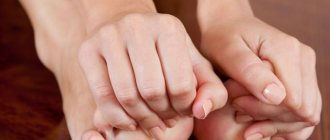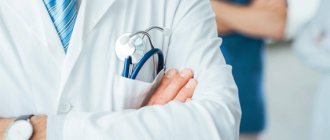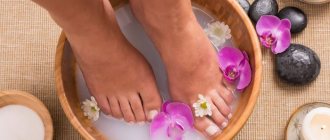Any external influence on the body, for example, a change in air temperature or contact with irritants, instantly affects the condition of the skin. Sometimes red spots and swelling appear on the body. The person experiences itching and burning.
Internal diseases and contact with aggressive chemicals can cause such symptoms. One of the common causes of itching and redness of the skin is allergies. Children are more likely to suffer from it. However, the body of an adult can also react inadequately to external irritations.
In a child, the cause of itching and redness of the skin on the body is often infectious diseases such as chicken pox or scarlet fever. The main symptoms are accompanied by hyperthermia, weakness, and general malaise. Infants often experience diathesis, in which the rashes are localized on the head, in the facial area, where crusts form. In the absence of therapy, weeping spots form in areas of redness. Typically, an allergic reaction is provoked by fruit juices and new complementary feeding mixtures.
The Rossimed clinic employs experienced allergists and dermatologists who can identify the cause of allergies and prescribe the necessary treatment.
Doctor, what's wrong with me?
If your legs (or one leg) are swollen and red, we recommend consulting a doctor.
Especially if swelling occurs regularly. According to experts, swelling is not the norm. Even if you stand on your feet all day and are tired, the presence of recurring swelling still indicates certain problems. Do not self-medicate, especially if you notice redness and pain on your leg. This condition may be the result of an injury that you did not pay attention to at first. Or it may indicate the presence of a serious illness (including thrombophlebitis), for which it is necessary to receive professional medical help as quickly as possible. There may be several reasons for swelling and redness of the leg.
What are internal varicose veins
With internal varicose veins, it is not the superficial, but the deep veins that are affected. The usual external signs in the form of bulging veins and vascular networks are often absent. The pathology is manifested by soreness of the lower extremities, which is often mistaken for banal fatigue. Elderly people are susceptible to internal varicose veins, whose deep veins transform due to age-related changes, become less flexible and elastic, and the valve system suffers from wear and tear. If the pathology is not treated, ulcers form on the lower extremities, which are difficult to heal.
Joint disease
Some joint diseases are accompanied by swelling and redness of the skin in the area of the affected joint. If it is a chronic disease, then patients know about it and pay attention. But there are also injuries that manifest themselves with these symptoms.
Joint injuries are always accompanied by pain. If it is not strong, if the joint is not swollen and its contours are not changed, you can bandage your leg with an elastic bandage and consult a doctor. If the pain is severe and does not go away with rest, if the joint is deformed, the leg is very red and swollen, this indicates that you should seek medical help immediately.
What are the symptoms of pelvic varicose veins?
If venous blood stagnates in the pelvic area, this can lead to the appearance of varicose veins in this area. It can stagnate due to sedentary work, mechanical compression of the veins by the enlarged uterus, and uncontrolled use of hormonal drugs. The cause of the appearance of dilated veins in the pelvic area can also be poor nutrition, constipation, hernias, problems in the genitourinary area, pathologies in the pelvic organs, nervous disorders and insomnia.
Most often the disease occurs in women. Pregnant women and menopausal women are at risk. The pathology manifests itself as pain in the perineal area, which becomes more intense after hypothermia or a long stay in a sitting position. Also, venous tubercles form in the perineal area, the process of urination becomes painful, and unpleasant sensations are observed during and after sexual intercourse.
All these signs require immediate contact with a specialist, because without adequate therapy, varicose veins of the small pelvis are aggravated by complications: thrombosis, thrombophlebitis, trophic ulcers. Pathology is diagnosed mainly by ultrasound examination, if there are no external signs yet.
Allergy
Many allergic reactions, such as those caused by insect bites, involve redness and swelling of the skin. In case of allergies, the patient usually complains of redness and itching on the legs. With the onset of the warm season, you need to especially carefully monitor your condition: insects may be hiding in the grass. In case of a severe reaction, unpleasant symptoms can be relieved by taking an antihistamine. If you leave allergies unattended, getting rid of unpleasant symptoms will take a very long time.
Team of Doctors
Internal varicose veins are very difficult to recognize in the initial stages. Therefore, everyone who has a genetic predisposition to this disease is recommended to undergo a preventive ultrasound at least once a year. Since the deep veins are surrounded on all sides by muscles, it is impossible to detect their deformation during visual inspection
"Cardiac" edema
With diseases of the cardiovascular system, in particular with heart failure, swelling also occurs, which in some cases may be accompanied by redness of the legs. In this case, swelling increases if it is hot outside, if a person spends a lot of time on his feet. But at rest the swelling subsides. The leg in the area of swelling is soft to the touch.
Interestingly, cardiac edema can go away on its own if the heart function improves at some point or the patient reduces the level of activity. However, their appearance indicates that you need to contact a cardiologist.
Why is reticular varicose veins considered a mild form?
Varicose veins of the lower extremities have a separate type - reticular varicose veins. It is common mainly among women and is considered a mild form of varicose veins because in this case only the thin veins dilate.
Reticular varicose veins are often called cosmetic, since the main symptoms are external manifestations in the form of spider veins on the calves and thighs. Reticular varicose veins occur most often due to wearing high-heeled shoes, severe physical activity and taking hormonal pills.
Despite the fact that reticular varicose veins are mild, they need to be treated to avoid possible complications. Treatment of pathology of this type is carried out with the help of ointments, gels, venotonic nature, drug therapy, laser. Traditional surgical operations performed with a laser, especially a scalpel, are very rarely used.
Varicose veins
Varicose veins are one of the most common causes of edema. Due to the weakening of the tone of the venous walls, the blood in the vessels stagnates, and the fluid pressure in the vessels increases. The body tries to regulate this situation on its own, and as a result, some of the fluid leaks into the tissue surrounding the vessel.
Varicose swelling usually worsens in the evening. To relieve the condition, you need to lie down and elevate your legs. You can also wear compression stockings (if you have one) or do some exercises to get your blood flowing. It is also useful to make contrast baths.
But if you notice a combination of redness of the skin on your legs and swelling, we recommend that you consult a doctor. This may be a manifestation of thrombophlebitis - a dangerous condition when the lumen of a vein is closed by a thrombus, a blood clot. As a result, blood flow through such a vessel stops.
Thrombophlebitis requires mandatory treatment from a specialist. If blood clots form in the lumens of the vein, it means that a floating thrombus may form in one of the vessels. It is able to move through the bloodstream, and can ultimately clog the pulmonary vessels.
So, if your legs are very red and swollen, or if the redness on your leg is accompanied by pain, rush to the doctor. After all, this may be the result of a minor injury, or it may indicate a somatic disease or the formation of blood clots. Only a specialist will determine the true cause of your condition and help normalize the situation. Treat yourself and your health carefully and feel light and comfortable!
Why do varicose veins appear?
If you know the causes of varicose veins, you can protect yourself in time by taking preventive measures.
Heredity. If one of your relatives suffers from varicose veins, then there is a chance that you will have it too. Varicose veins themselves are not inherited, but you may inherit structural features of the veins or, for example, a tendency to be overweight, which will affect the occurrence of problems with the veins.
Pregnancy. During pregnancy, a woman's body produces an increased amount of progesterone, which relaxes the walls of the veins. They can't do their job and the blood stagnates. Also during pregnancy, a woman’s body weight increases and the amount of circulating blood increases, which increases the load on the veins.
Overweight. Large body weight creates a constant load on the lower limbs. It is more difficult for the veins to supply blood to the heart and lungs, the blood stagnates, and the veins dilate. As a result, venous expansion of the veins occurs.
Wearing uncomfortable clothes and shoes. If the shoes are too narrow and tight, it prevents blood from circulating normally in the legs. The same goes for clothes that are too tight.
Elderly age. Age-related negative changes occur in the walls of blood vessels. They lose their elasticity, the vessels stretch and blood accumulates and stagnates in them.
4.Bemer therapy
In our medical practice, Bemer therapy has proven to be the most successful way to combat any type of pain. BEMER therapy is electromagnetic physiotherapy from Switzerland, the main goal of which is to improve blood circulation.
The Bemer device consists of three elements: an induction mattress aimed at general health improvement, a reinforced applicator - a device that allows you to influence a specific place, and a laser magnet, which has the strongest effect on the pain point
read more about Bemer therapy by following the link. If you want to get a consultation or make an appointment, you can do this using the feedback form or by phone: +7-495-212-08-85
Sign up for a consultation
Complications due to varicose veins
If treatment for varicose veins is not carried out or is carried out insufficiently, then sooner or later complications arise. These include venous thrombosis. A blood clot forms in the lumens of the vessel, which leads to thrombophlebitis. The vascular walls become inflamed, and the blood clot plays the role of a time bomb, because at any moment it can break off and clog vital arteries. Thrombophlebitis progresses especially quickly after infectious diseases, during air travel, difficult childbirth and complex surgical interventions.
Deep vein thrombosis of the lower extremities occurs very quickly. Literally within a few hours, inflammation occurs on the vein, the lower leg increases in size, swells, and acquires a bluish tint. At the slightest physical exertion, a person feels acute pain, but rest does not bring complete relief.
Trophic ulcers occur due to disruption of blood flow in tissues, resulting in necrosis and tissue rejection. First, severe swelling and burning of the skin appears. The legs become as if wet due to lymph seeping out; small ulcers first appear on the skin, which subsequently develop into large, non-healing wounds.
Very often, complications of varicose veins manifest themselves in the form of venous bleeding, which is sometimes impossible to stop without medical intervention. If a person with varicose veins has been injured in the area of bulging veins, lifted an unbearable weight, or overexerted in sports, then the likelihood that the thinned vein may burst increases.
What does varicose veins of the foot look like?
At the very beginning of the development of pathology, one feels heaviness and fatigue in the legs by the end of the day. Next, aching pain may appear, a sensation as if the leg is bursting, and the foot swells. All these symptoms may go away on their own after rest. But you shouldn’t put off going to the doctor. If varicose veins of the feet are not treated at the initial stage, the disease will begin to progress. First, spider veins and spider veins will appear, then varicose veins will also affect large veins. At this stage, the pain becomes constant, the legs begin to swell more, and muscle spasms appear.
1.Pain in legs
Almost all people at some point in time experience problems with their legs - pain in the legs, pain in the feet, toes, ankles and other unpleasant sensations.
Why is this happening? In fact, there can be many reasons. Most of the time, our body movements do not cause any problems. But due to daily or too intense stress, a variety of leg diseases can develop. In addition, injuries and the natural aging process can cause discomfort and pain in the legs.
Your toes, feet, and ankles may experience burning, pain, fatigue, numbness, tingling, warmth, or coldness
.
muscle spasms
occur in the legs, especially at night when you sleep, and swelling of the legs.
The feet and ankles may become discolored, pale, or blue
.
There may be an unpleasant odor from your feet
.
Some of these symptoms are normal for older people or pregnant women. In this case, treatment at home is usually sufficient. In other situations, you need to find the cause of the problem and treat it.
Bemer therapy is a modern way to combat all types of pain. You can read more about Swiss physiotherapy in this section
Sign up for a consultation
A must read! Help with treatment and hospitalization!











